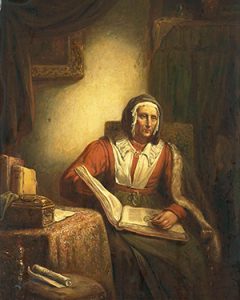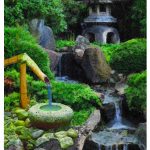Lessons Learned Selling Art
 Over the past 15 years on and off, I have sold Watercolour paintings, Original Acrylics and recently digital watercolour paintings. It’s been an interesting experience. This post today addresses how other artists can sell and discusses tips and ideas to consider.
Over the past 15 years on and off, I have sold Watercolour paintings, Original Acrylics and recently digital watercolour paintings. It’s been an interesting experience. This post today addresses how other artists can sell and discusses tips and ideas to consider.
Tip #1 – Don’t assume you know what people want or like. We all assume we understand the market for our artwork. But there are always surprises. When I started selling prints of my watercolours ( with Garden themes), they sold very well. But about 2-3 years ago, I started developing artwork with a Victorian / Jules Verne them ( known as Steampunk). I did n’t know if anyone would be interested. I was very surprised at how quickly it took off.
The biggest surprise was the fact that people I assumed would not like this artwork, did like it. In addition to existing friends and clients, my world opened up to US markets that I had not reached before and European followers of my art. This is turning into sales at quite a distance.
Tip #2 – paint what you want to paint, not what everyone tells you they want you to paint. This came about when I started painting gardens. A lot of feedback came in that I should pay landscapes, grain elevators and Peace Country scenes. For me, I was not as interested as I grew up on the coast on Vancouver Island and wanted to paint fishing boats, marinas and coves, and other west coast scenes. My interest in Architecture allowed me to paint European villages and scenes from Italy, France etc.
I also have a great deal of interest in space and science fiction. So painting aliens, and fantasy scenes appealed to me. Now many commented that these paintings were great but they wanted local art. But after a few years, most of my art is selling and there is someone out there that will like my artwork. Right now I am doing a lot of Japanese gardens and koi ponds. These are not common in the City I live in but there is a nationwide market for these.
Tip #3 – Don’t be afraid to copy (while learning to paint) other artists. Great practice and allows you to learn new skills and techniques. I study the old masters and I am enjoying studying there work, their styles, their colour palettes. In certain cases while surfing online, I will take a screenshot of a piece of art and print and then draw over top highlighting the perspective, the areas of high contrast, where my eye is drawn. All part of the learning process.
 Its always a good exercise reviewing successful artists and seeing what they are doing successfully. What can you learn that they have had success with? Can you duplicate that technique or marketing method? Don’t be afraid to reach out and contact these folks. Tell them what you like about their art. It would surprise you how willing other artists are to help you.
Its always a good exercise reviewing successful artists and seeing what they are doing successfully. What can you learn that they have had success with? Can you duplicate that technique or marketing method? Don’t be afraid to reach out and contact these folks. Tell them what you like about their art. It would surprise you how willing other artists are to help you.
Tip #4 – Experiment with new techniques, new tools and paint new subjects. It’s not only good practice but it allows you to expand your base of clients and art followers. Many years ago I wanted to learn how to paint Bonsai trees. I had never painted this subject. I love to paint these miniature trees and love the subject.
I also try different types of paint. I started with Watercolour and then wanted to paint with brighter colours that were more opaque ( less transparent). So I took some lessons and started painting acrylic paintings on canvas. Although I have not experimented with oil paints, I have used Gouache paints (opaque) and also Casein Paints ( a milk-based paint). I have also used pen and ink and coloured liquid inks.Tip #5 – Paint often if you can. When I paint Acrylics or Watercolours, a typical 20 x 24-inch canvas will take me about 15 – 25 hours. And I might paint two a month. But lately, I have been trying hard to paint daily ( even if it’s just for a short time). The pleasant surprise is that I am getting better at painting, getting more followers and find it very therapeutic. Even an hour a day can make for a better painting career.
About 2-3 years ago I started getting serious painting digitally using both Adobe Photoshop and Procreate (iPad app that uses Apple pencil). Most of my digital paintings come together in about 4-6 hours. Some take 12-15 hrs but that’s for complicated images. So based on the 4 – 6 hours to paint a typical digital painting, I can create at least 12 paintings a month.Tip #6 – Getting the word out. How do people find out about your artwork? Can you get them interested in buying your art? Yes. Over the years, I have sent out newsletters, art cards, postcards, completed art shows at the local gallery. But I have also posted on social media ( Facebook, Pinterest, Twitter, Instagram, Youtube and others) and this has increased my sales and the attention to the art I am creating.
Instagram has garnered interest in my art all over the United States, Europe and the rest of the world. The miracle of the Internet and online promotion can build your audience in a record amount of time. You can also target very specific groups.As an example, a few years ago I started promoting my watercolour art to nurses working at a Philadelphia hospital. As a nurse or two bought my art, they talked amongst themselves and I ended up selling more limited edition prints. They had a healthy income, worked long hours and liked watercolours. Over the years, they bought a lot of my artwork.
 Tip #7 – It’s a BIG world out there. Most people that start to paint look at selling into the community they live in. In my case, that’s a city of about 14,000 residents. But I can ( using the Internet) promote and sell artwork all over BC or Canada. Their population is much higher and the percentage of people with disposable income to buy art much higher.
Tip #7 – It’s a BIG world out there. Most people that start to paint look at selling into the community they live in. In my case, that’s a city of about 14,000 residents. But I can ( using the Internet) promote and sell artwork all over BC or Canada. Their population is much higher and the percentage of people with disposable income to buy art much higher.
Hopefully, these lessons I learned may help others selling artwork and promoting their art businesses.
Good Luck!
Gordon
